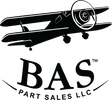Robinson R44 SAIB 2024-05: Understanding and Addressing the Gearmotor Issue
Posted by Clinton McJenkin on Oct 29th 2024
Robinson R44 Gearmotor Assembly Looseness: A Comprehensive Overview - This document provides a detailed analysis of the gearmotor assembly looseness issue affecting certain Robinson R44 helicopters, outlining the problem, the implemented solutions, and the specific aircraft models impacted. The information is based on the Special Airworthiness Information Bulletin (SAIB) 2024-05 issued by the Federal Aviation Administration (FAA).


The Problem:
Potential Gearmotor Assembly Looseness
The core issue revolves around the potential for loosening of the gearmotor assembly (part number D276-1 or D276-3) within the belt-tension actuator system of specific Robinson R44 helicopters. This concern also extends to C051-1 and C051-2 (Revision AC and prior) belt-tension actuator assemblies sold as spares, which incorporate these same gearmotors. The FAA investigation revealed a link between this looseness and two key manufacturing factors:
2. Potential Absence of Thread Locking Adhesive:
In some instances, the thread locking adhesive, designed to prevent loosening of the countersunk head screws, was either absent or insufficiently applied during the manufacturing process. This absence further compromised the structural integrity of the gearmotor assembly, exacerbating the risk of loosening and potential failure.
The consequences of a loose gearmotor are significant. The gearmotor plays a crucial role in the helicopter's power transmission system. A loose gearmotor can lead to:
The FAA's investigation highlighted reports of this issue coming from both domestic and international operators of Robinson R44 series helicopters. This widespread reporting underscores the significance of this safety concern and the necessity for timely corrective action.
The Solution:
Multifaceted Approach to Ensuring Gearmotor Security
This service bulletin, dated October 27, 2023, details a mandatory one-time inspection and repair process for all affected aircraft. The inspection involves verifying the security of the gearmotor assembly and applying a torque stripe to allow for future visual inspections during routine maintenance. This immediate action addresses the existing potential risk and provides a baseline for future monitoring.
RHC revised their R44 series maintenance manual in September 2023 to integrate a gearmotor assembly torque stripe verification into the standard 100-hour/annual inspection procedures. This addition ensures the continued monitoring of the gearmotor assembly's security as part of the routine maintenance schedule. The visual inspection aided by the torque stripe greatly improves the detection of any potential loosening over time, preventing the problem from developing into a major failure.
While not explicitly stated in the SAIB, it is implied that RHC has implemented improvements to their manufacturing processes to address the root causes of the problem: improved dimensional control of countersunk head screws and consistent application of thread-locking adhesive. These improvements will ensure that future gearmotor assemblies are less susceptible to the loosening issue.
The combined approach of immediate inspection and repair, followed by integrated ongoing checks within the standard maintenance schedule, ensures both the immediate mitigation of existing risks and the prevention of similar occurrences in the future.
Aircraft Impacted:
Robinson R44 and R44 II Helicopters
The airworthiness concern directly impacts Robinson Helicopter Company's R44 and R44 II helicopter models. Specifically, this affects helicopters equipped with the implicated gearmotor assemblies (P/N D276-1 or D276-3) within their belt-tension actuator systems. Owners and operators of these specific aircraft models are urged to review RHC Service Bulletin SB-115 and implement the recommended inspection and corrective actions as soon as possible to address this critical safety issue. While the SAIB does not state a total number of affected aircraft, the widespread nature of the reports suggests a substantial number of R44 and R44 II helicopters are impacted globally.
This comprehensive approach, combining immediate corrective action with long-term preventive measures, aims to ensure the continued safe operation of affected Robinson R44 and R44 II helicopters. The collaborative effort between the FAA and RHC highlights the importance of proactive safety measures within the aviation industry.





